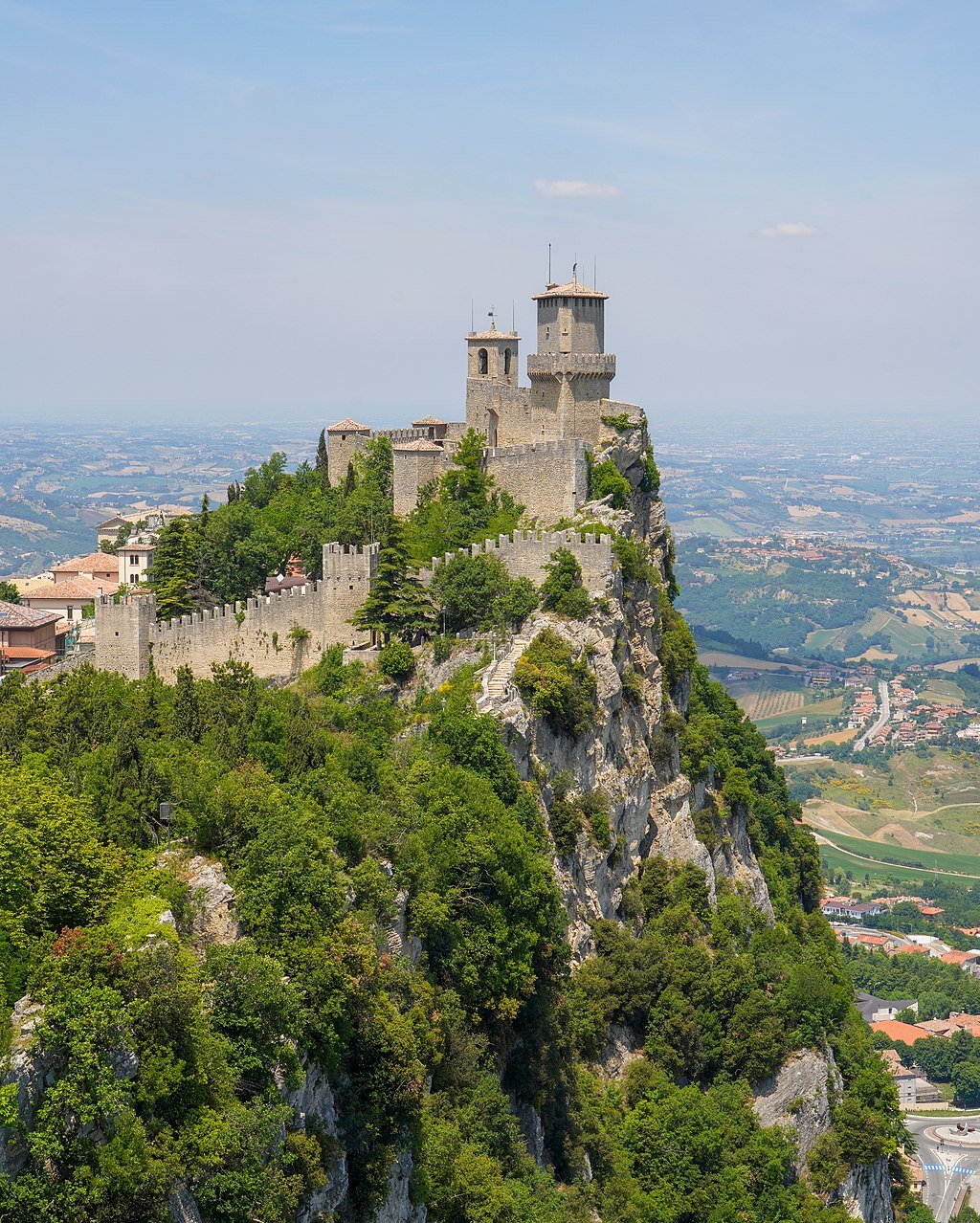
15 Best Places to Visit in San Marino
San Marino, the oldest sovereign state in the world and the smallest at just 61 metres squared, is a prime example of the adage that good things come in small packages. The Republic of San Marino, sometimes known as the Serene Republic of San Marino in poetic form, is a sovereign nation located in the heart of Italy, next to the Apennine Mountains, with views that extend all the way to the Dalmatian Coast. San Marino, the third-smallest nation in Europe after Vatican City and Monaco, is home to a variety of interesting and unusual sights, including forests, fortress towers, commercial centres, medieval marketplaces, and Olympic stadiums. Let’s look at the greatest tourist destinations in San Marino!
- Palazzo Pubblico
- Rocca Guaita and Torre Cesta
- Basilica di San Marino
- The restaurants in San Marino city
- Mount Titano
- Dogana
- Borgo Maggiore
- The Festivals
- Montegiardino
- Serravalle
- National Museum
- Torre del Montale
- The Museums
- Faetano
- Piazza Della Liberta
Palazzo Pubblico
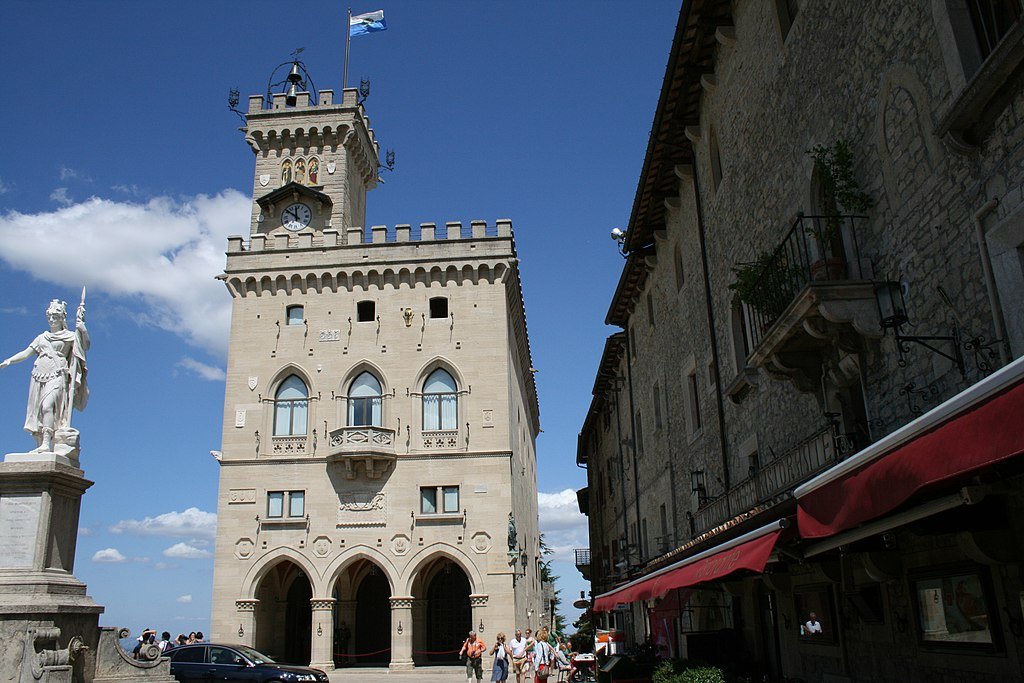
Due to its Gothic design and elaborate exterior, Palazzo Pubblico is clearly recognized in San Marino. All significant official government events and ceremonies are held at Palazzo Pubblico, which serves as the state’s official Town Hall. The structure, which was constructed in the 1800s, is made of stone that was extracted from nearby Mount Titano. As you get closer, you’ll notice the building’s square clock tower, which has battlements reminiscent of Florence’s Palazzo Vecchio. There is a stairway inside the structure that leads to the top tower, which is definitely worth a visit.
Rocca Guaita and Torre Cesta
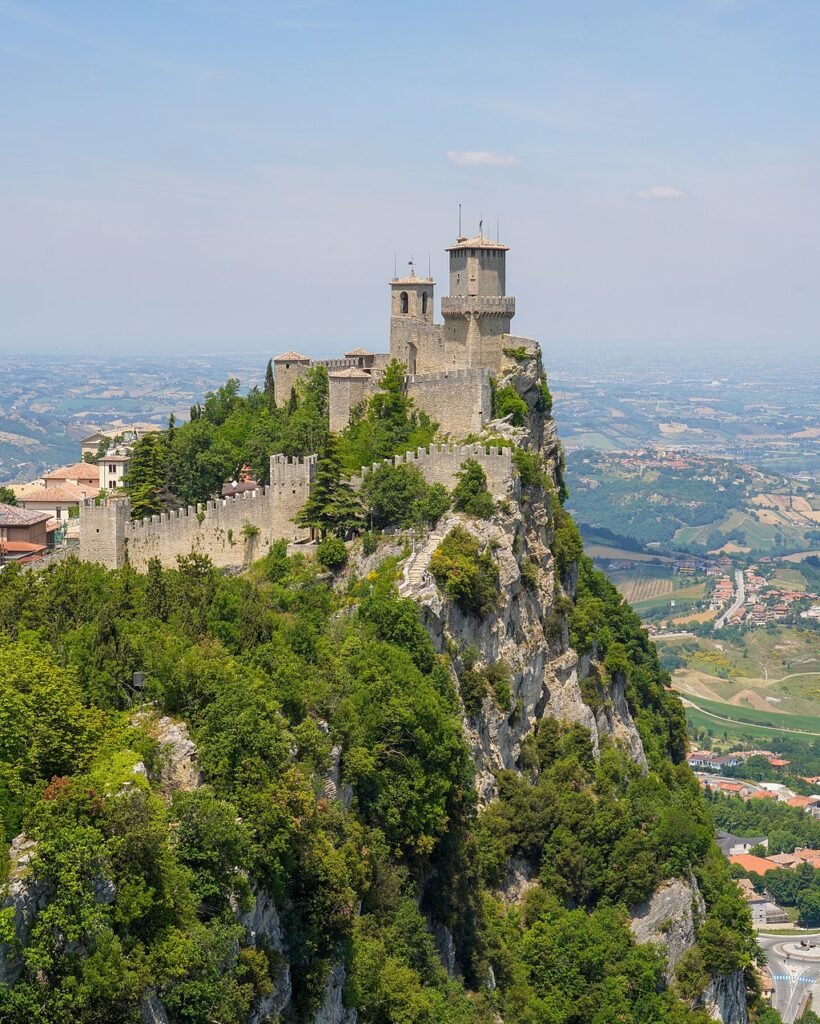
The Rocca Guaita and Torre Cesta fortification towers are two of San Marino’s most well-known tourist destinations. They are located on a ridge near the top of Mount Titano. Visitors can visit and tour the towers, the oldest of which, Rocca Guaita, originates from the 13th century. The towers are one of a group of three that appear on the official flag of San Marino. The two towers are typically visited together, and Torre Cesta contains a local museum of historical weapons. Beautiful views of the surrounding Apennines and the Dalmatian Coast may be seen from the top of the towers. You may find food and beverage vendors, gift shops, and tourist information centers on Mount Titano and around the towers.
Basilica di San Marino
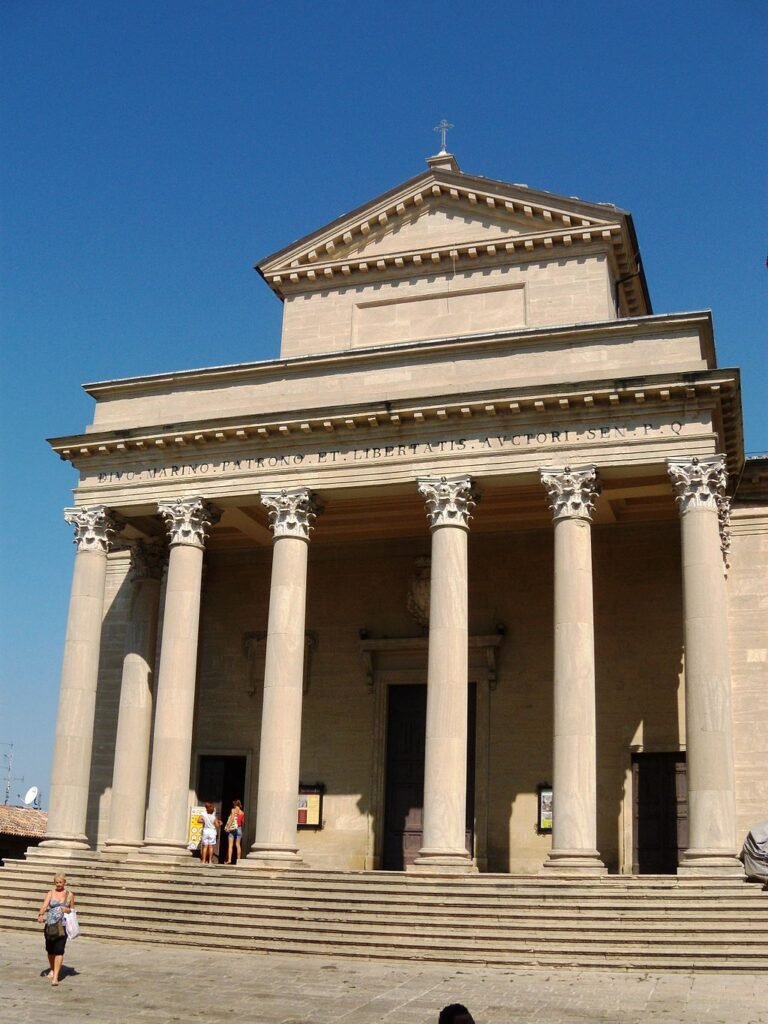
The Basilica di San Marino, which dates to the early nineteenth century, was really erected on the ruins of a Roman basilica that had been there in the fourth century. The Basilica is famous for housing the bones of the patron saint of San Marino, Saint Marinus, which are stored in an urn, and there is a high altar that features a statue of the saint. Visitors should also spend time exploring the Basilica di San Marino’s exquisitely crafted paintings, in addition to the basilica’s seven elaborately designed and magnificent alters.
The restaurants in San Marino city
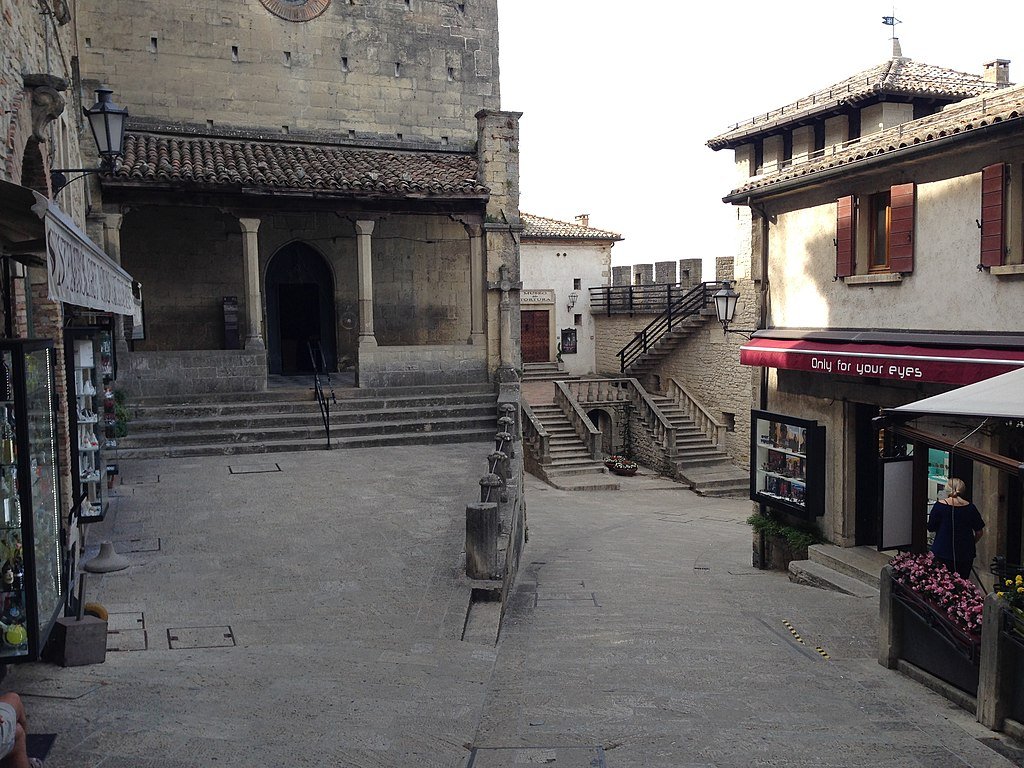
As you might assume, Italian flavours and ingredients greatly influence the cuisine in San Marino, with a focus on pasta dishes, seasonal local produce, and copious amounts of flowing wine. Faggioli con le cotiche, a type of bean and bacon soup ideal for the warmer winter months, and Torta Tre Monti, a preferred Sammarinese dessert, are distinctively Sammarinese, nevertheless. San Marino attracts many tourists from neighbouring Italy because of two of its well-known exports: wine and the region’s famous truffles. Some of the state’s top restaurants are rumored to be located in San Marino.
Mount Titano
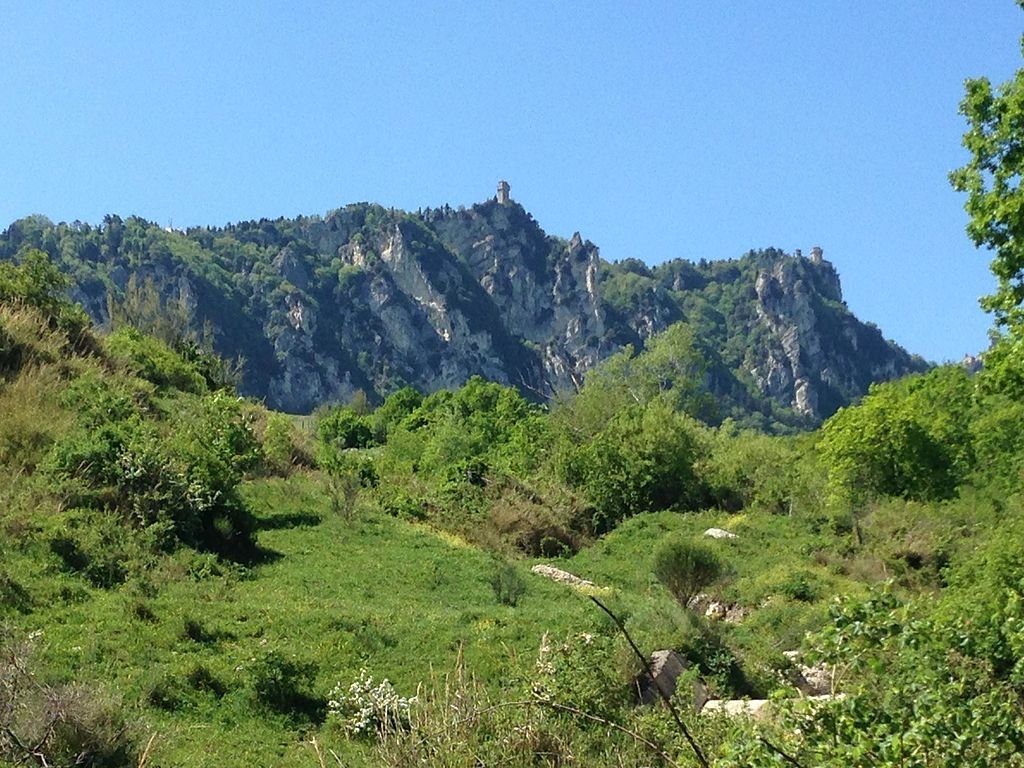
In addition to the main road that leads to the tower, there are several clearly defined walking trails that lead through beautiful and lush woodlands, providing you with a different vantage point of the busier city centre below. As Mount Titano is located at an elevation of 750 meters above sea level, the mountain air is crisp and bracing, so be prepared for it to be cooler than the lower regions of the state and make travel arrangements accordingly. There are old stone benches scattered throughout the mountain that are the perfect place to relax while taking in the views.
Dogana
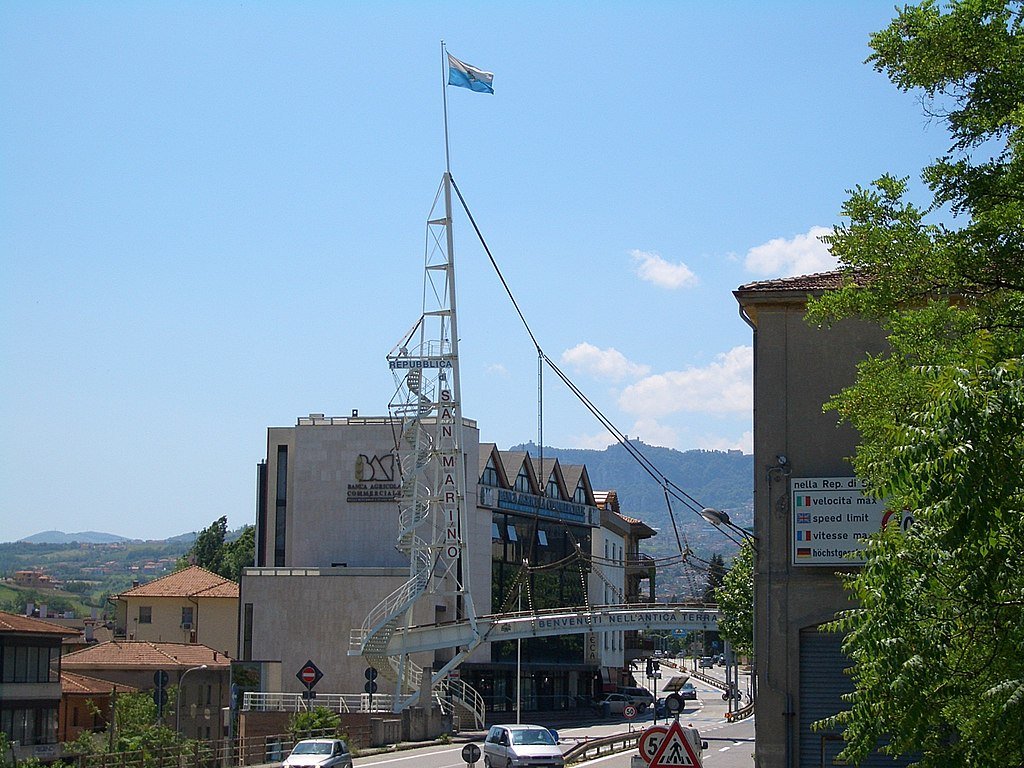
The primary entry and exit points for tourists wanting to come to San Marino are located in the town of Dogana, which is situated in the north of San Marino, close to the border with Rimini. The name Dogana literally translates as’ Customs House, ‘although there are no border checkpoints as you enter or exit San Marino, and the main buses that run from Italy into the state usually stop at several shopping malls that are located in Dogana. You can purchase duty-free goods and souvenirs, including items made locally, here.
Borgo Maggiore
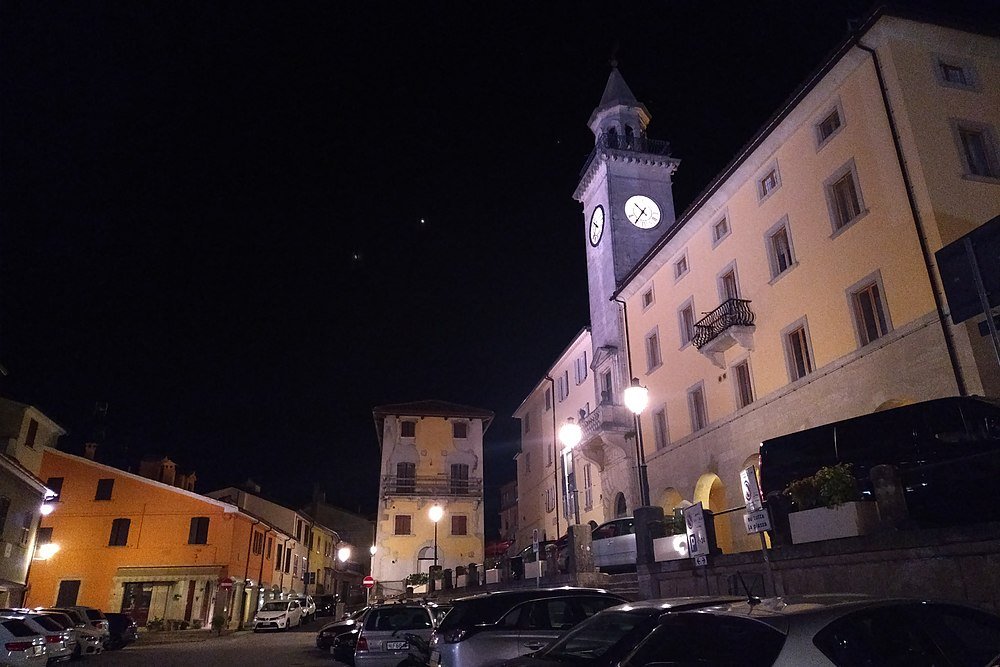
Beginning as a peaceful village, Borgo Maggiore has developed into a modern town that is one of San Marino’s main residential neighbourhoods. The Thursday street markets in Borgo Maggiore, which run from early in the morning until close to two in the afternoon, are its most well-known feature. You may shop in a place with a long and illustrious history if you visit Borgo Maggiore (formerly known as Mercatale), where the first marketplaces are said to have taken place in the 13th century. While cattle were once sold at the markets, you are now more likely to discover fresh local fruit, household goods, and local arts and crafts. A funicular connects the town to the city of San Marino, allowing you to rise while taking in the stunning views over the state.
The Festivals

San Marino hosts the famed San Marino Jazz Festival in the city of Borgo Maggiore as well as the Adriatic Music Festival, so if you appreciate festivals and are in the country in July, you will have lots of options. As San Marino returns to its roots and celebrates all things medieval in the state, look out for the Medieval Days celebration, which offers historical costumes, food, games, and arts and crafts.
Montegiardino
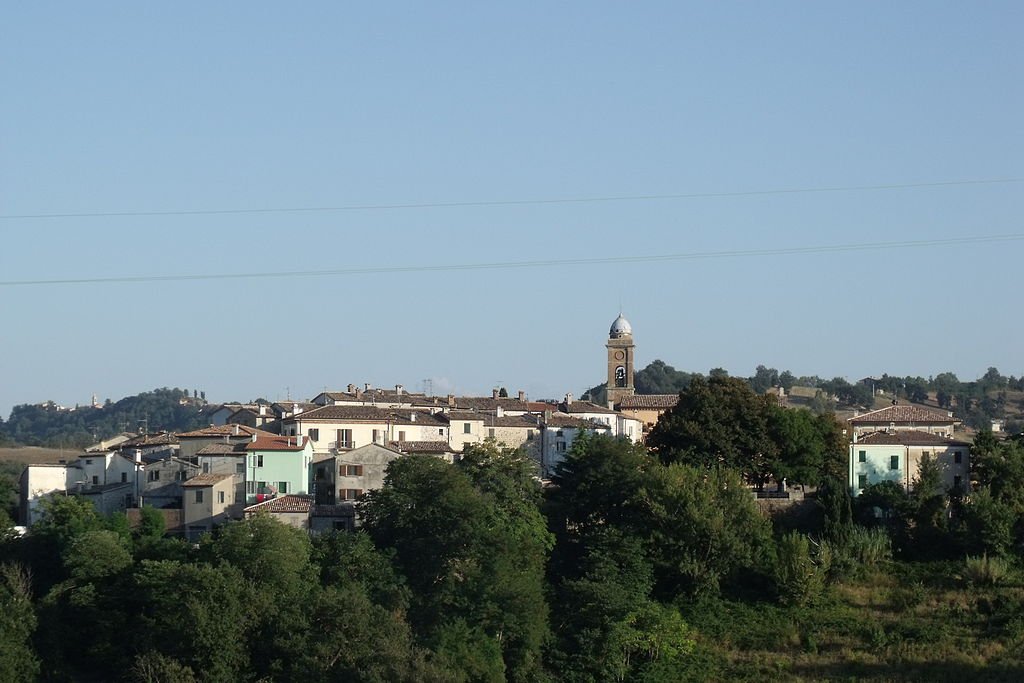
Another of San Marino’s nine communes, Montegiardino is best known for being the sole university town in the country and the location of the University of the Republic of San Marino. The town has been called the most beautiful in all of San Marino and has the laid-back, erudite atmosphere found in university towns all over the world. With a history that is thought to go back to the Roman era, Montegiardino is steeped in culture. You can enjoy the area’s well-established cafe culture while spending a few hours trying the local cuisine, including the unique flatbread sandwiches known as piadina, which are also well-liked in the nearby Italian provinces.
Serravalle
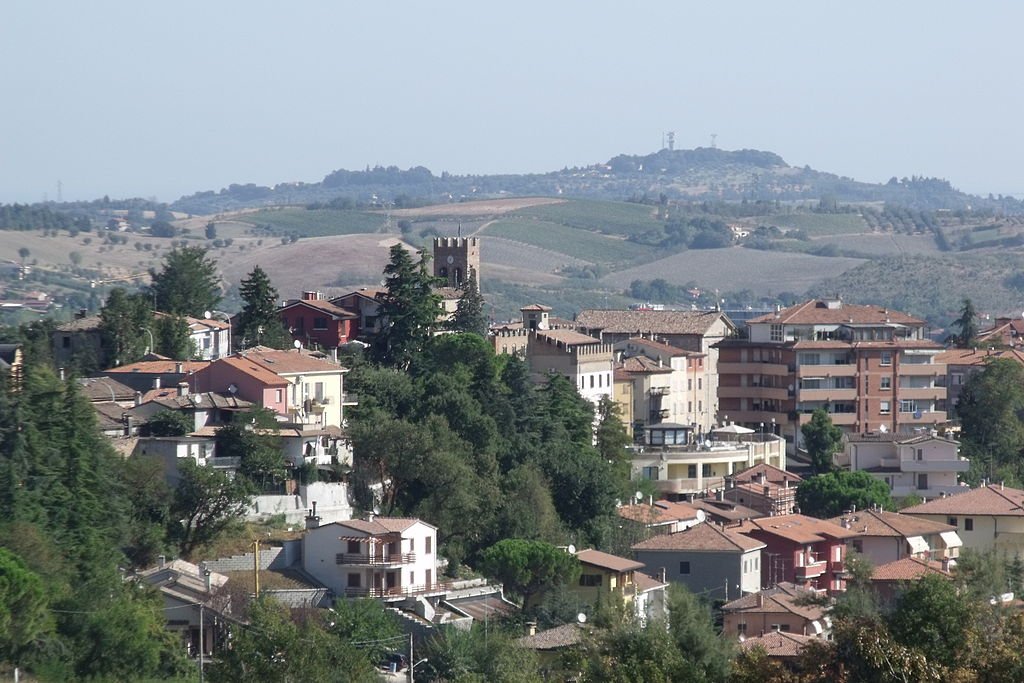
Serravalle, the largest municipality in the state and one of San Marino’s Castelli, is situated at the base of the Apennine Mountains. The town, which was formerly known as “The Village of the Elm Trees,” was founded in the Middle Ages. The Serravalle Castle, which is depicted in the Castello’s coat of arms, and Saint Andrea’s Church, a 19th-century structure, are notable landmarks in Serravalle. Check out the Olympic Stadium, a bit of a misnomer and not really connected to the Olympic Games, but rather the national stadium utilized primarily for football events, for modern architecture.
National Museum
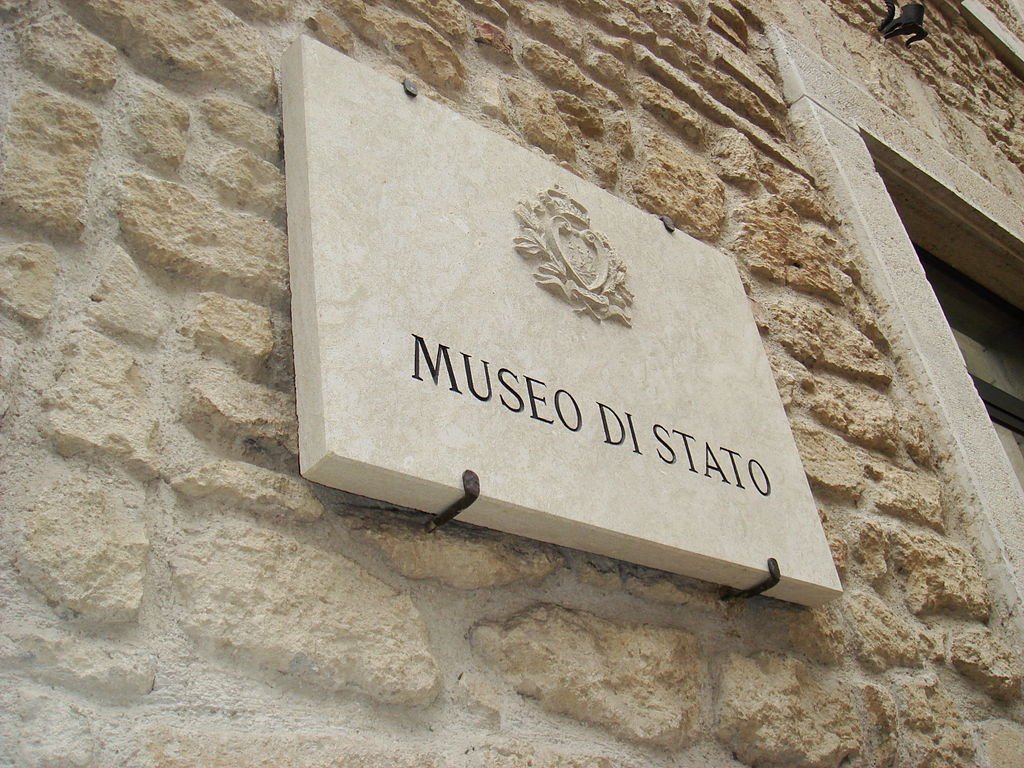
The National Museum, which has a diverse collection of Neolithic artefacts, Roman artefacts, and even Egyptian and Byzantine historical works, is located at Palazzo Pergami Belluzzi. The museum also houses a variety of works of art that date back as far as the 17th century and early instances of San Marino money. The National Museum contains more than 5,000 superbly preserved and displayed treasures that will walk you through San Marino’s and the region’s history. Numerous significant Italian public personalities, including politicians, artists, and celebrities, have donated artwork to the museum over the years. Many of the pieces on show are the result of their donations.
Torre del Montale
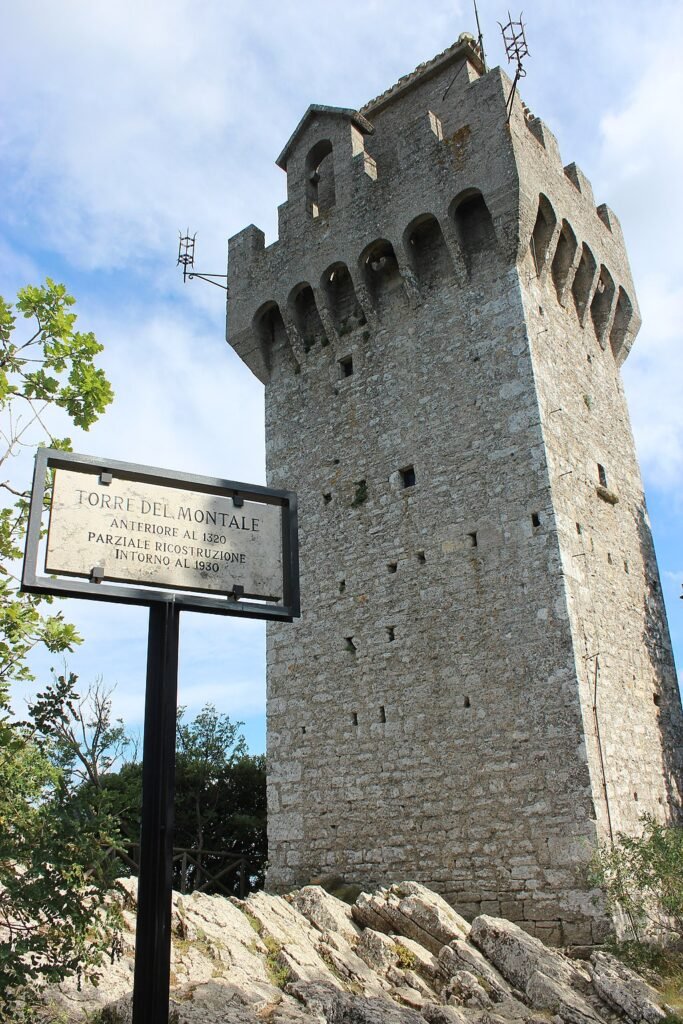
Torre del Montale, the third tower on Mount Titano, is reachable by strolling a little bit further down the cliff from Torre Cesta and Rocca Guaita. Unfortunately, Torre del Montale is not accessible to the general public, but it is well worth the trip along the designated footpath that skirts Mount Titano’s ridge to see it. Here, you will find even more breathtaking views of San Marino as well as several quaint spots to unwind with a picnic and take in the natural scenery.
The Museums
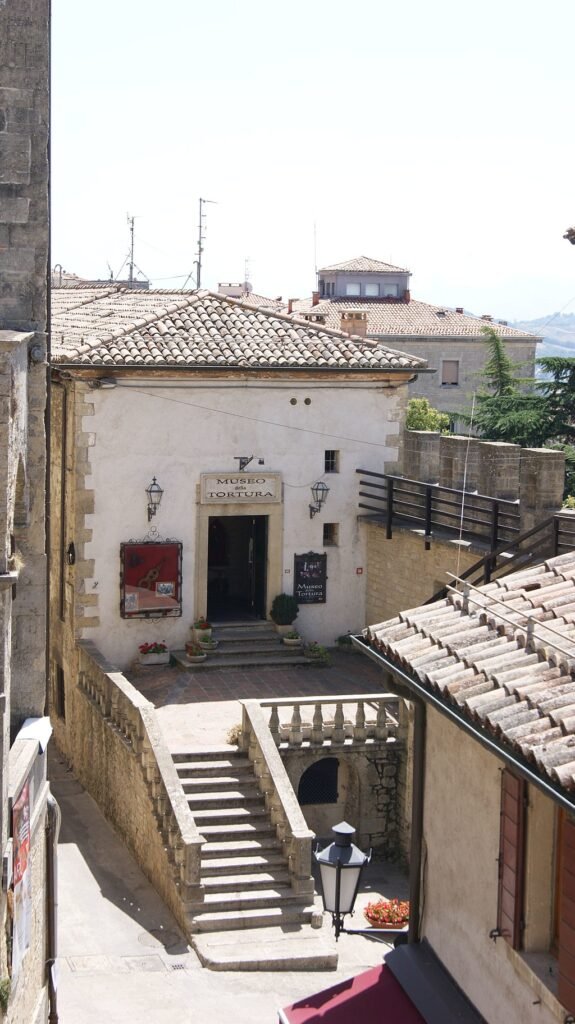
San Marino, whose capital city also has the name San Marino, may be small, but that doesn’t mean it lacks in the museum scene. Anyone who enjoys taking a stroll around an exhibition won’t be let down in San Marino. Apart from the National Museum, there are a ton of speciality museums to visit while in San Marino because it appears to specialize in unusual museum topics. One of these is the Museum of Torture, a bit morbid but extremely fascinating location to visit that showcases a variety of torture instruments throughout time. In the Wax Museum, you can find a variety of prominent historical figures from throughout time as well as various references to San Marino’s past, which will help you learn about the country’s history as well as the people who influenced it. For those who are interested in learning more about the history of San Marino’s money and mail, there is even a coin and stamp museum.
Faetano
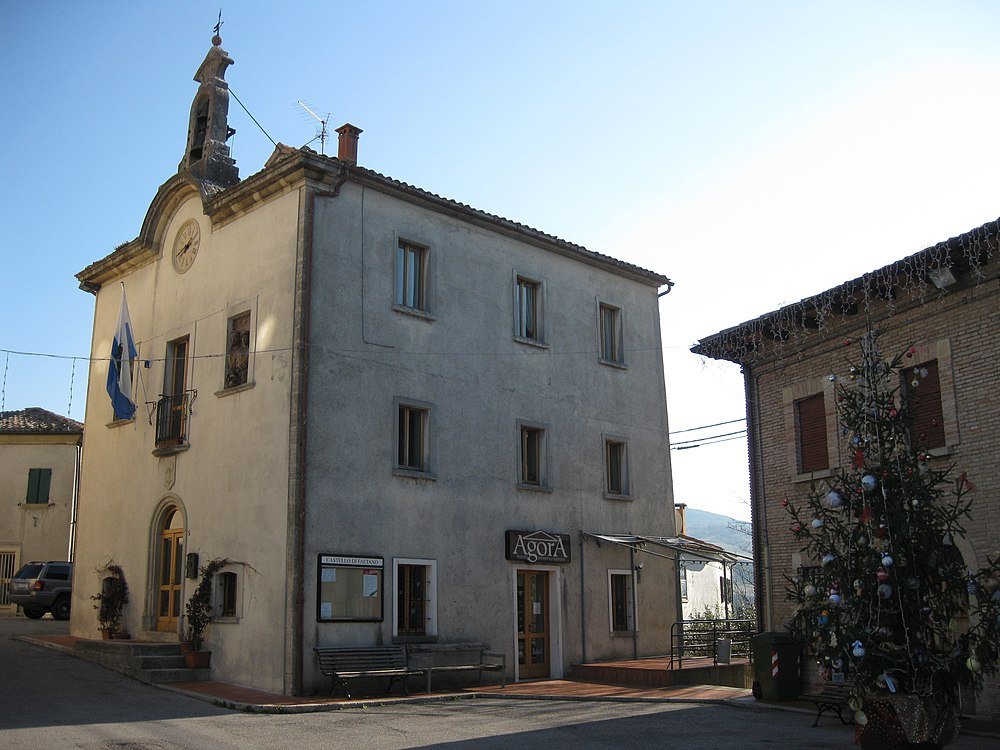
One of the nine communes that make up San Marino’s catelli is the town of Faetano, which was formerly a part of Italy’s neighbouring Rimini before joining San Marino in the fifteenth century. Visitors travel to Faetano, a peaceful neighbourhood in San Marino with fewer than 1,000 residents, to see the Church of San Paolo Apostolo and the charming town hall. Visitors can spend a quiet day exploring Faetano’s narrow streets, taking in the local flavour and enjoying some of the local cuisine and wines.
Piazza Della Liberta
Come to Piazza Della Liberta to see one of San Marino’s most cherished customs: the Guardie di Rocca’s ceremonial changing the guard. The guard is changed every hour during daylight hours in the summer. The Guardian are distinguished by their green uniforms and red pompom caps. After taking in this captivating traditional performance, stroll down the one main street that branches off Piazza Della Liberta, which is lined with quaint shops selling local handicrafts like the most well-known items from San Marino, its duty-free goods, and its superb pottery.

